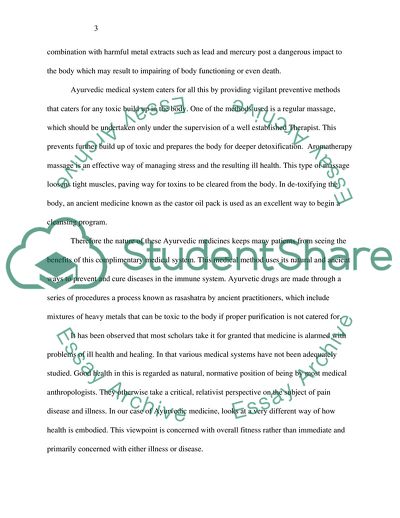Cite this document
(The Toxicity of Ayurvedic Medicine Use Research Paper Example | Topics and Well Written Essays - 4000 words, n.d.)
The Toxicity of Ayurvedic Medicine Use Research Paper Example | Topics and Well Written Essays - 4000 words. https://studentshare.org/anthropology/1866442-the-toxicity-of-ayurvedic-medicine-use
The Toxicity of Ayurvedic Medicine Use Research Paper Example | Topics and Well Written Essays - 4000 words. https://studentshare.org/anthropology/1866442-the-toxicity-of-ayurvedic-medicine-use
(The Toxicity of Ayurvedic Medicine Use Research Paper Example | Topics and Well Written Essays - 4000 Words)
The Toxicity of Ayurvedic Medicine Use Research Paper Example | Topics and Well Written Essays - 4000 Words. https://studentshare.org/anthropology/1866442-the-toxicity-of-ayurvedic-medicine-use.
The Toxicity of Ayurvedic Medicine Use Research Paper Example | Topics and Well Written Essays - 4000 Words. https://studentshare.org/anthropology/1866442-the-toxicity-of-ayurvedic-medicine-use.
“The Toxicity of Ayurvedic Medicine Use Research Paper Example | Topics and Well Written Essays - 4000 Words”. https://studentshare.org/anthropology/1866442-the-toxicity-of-ayurvedic-medicine-use.


